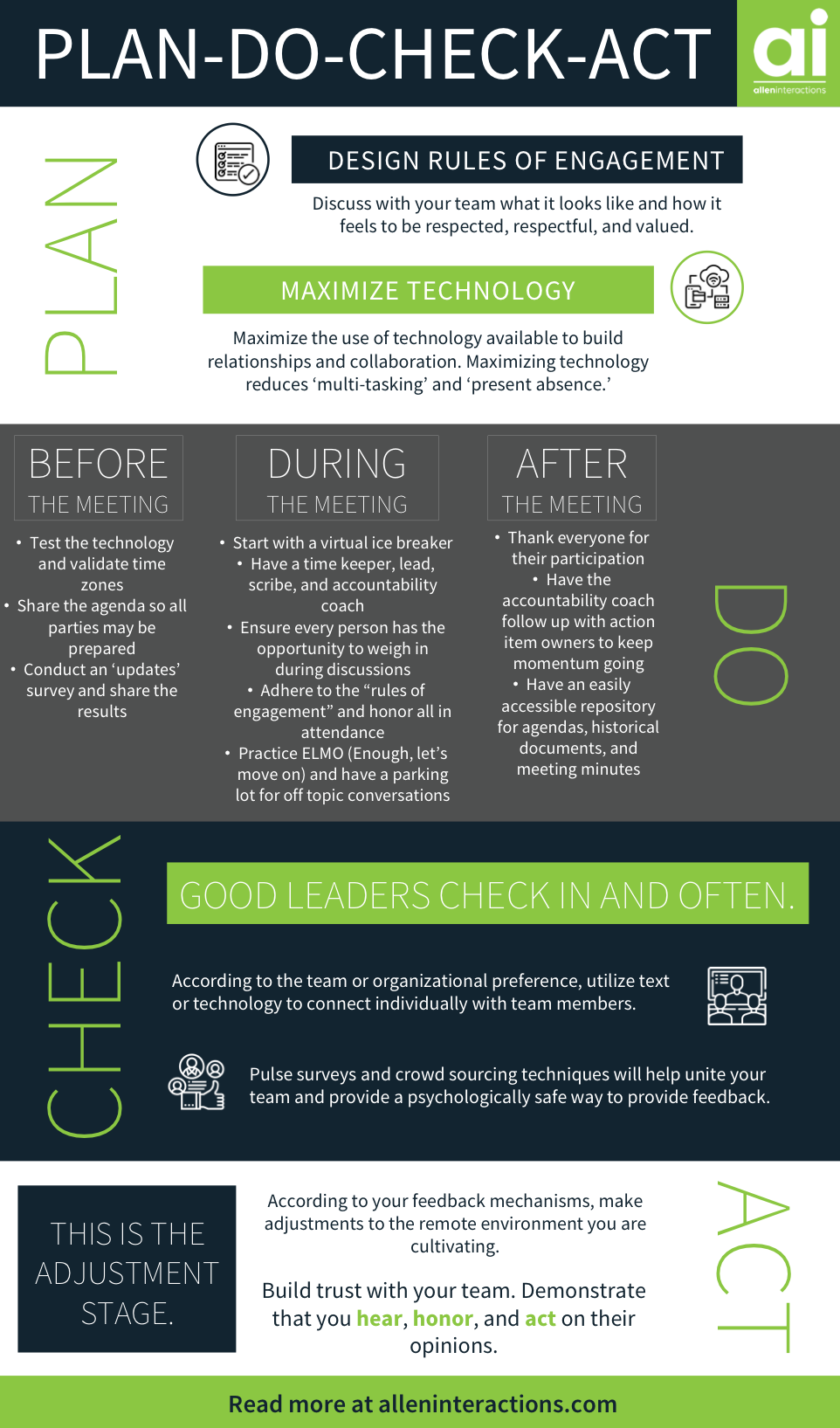Blog
Before the Change: Raising The BAR
Christina Coidakis-Barss, PhD, MS, MEd, is an executive leader whose experience includes designing and implementing team interventions during 2009 ...


Virtual Meeting Design is More Than an Agenda
By Dr. Christina Barss | March 16, 2020 | Custom Learning | 0 Comments
Christina Coidakis-Barss, PhD, MS, MEd, is an executive leader whose experience includes designing and implementing team interventions during 2009 H1N1 at Cleveland Clinic to leading enterprise change management during natural disasters (ex. the epic flooding of Hurricane Harvey in Houston) within the Texas Medical Center.
Challenging times require speed, clarity, and ability to respond. Leveraging Dr. Barss research with interprofessional and cross disciplinary teams, she co-lead carefully crafted multi-modal communication practices focusing on trust, transparency, and team work. That trust engendered her team the ability to design and implement specific proactive life-saving training in-services both instructor lead and computer based (virtual) within 24 hours enterprise wide.
The dynamics of transitioning from site based to remote teams can be a challenge. Apply the Plan-Do-Check-Act framework to help leaders and teams transition to remote work and the requisite virtual meetings. With disparately located team members, virtual meetings are wonderful opportunities to build engagement, trust and candor.
Plan
This is the design stage of the virtual meeting space. It may seem ironic to have a meeting about meetings, however it's vital to invest time into ensuring good remote team citizenship.
- Design rules of engagement. For example, discuss with the team what it looks and how it feels to be respected, respectful and valued.
- Maximize technology available to build relationships and collaboration. Recommend using video to bring humanness to the interactions. The plus side of this option is it reduces ‘multi-tasking’ and ‘present absence.’
Do
This is the execution stage. Before, during, and after the meeting.
- Before the meeting
- Test the technology and validate time zones
- Share the agenda so all parties may be prepared
- Conduct an 'updates' survey and share the results.
- Don't lose valuable meeting time conducting a one way round robin of 'updates.' Shift that time to a two way interactive discussion.
- During the meeting
- Connect people via a virtual ice breaker. Give people the opportunity to learn about each other.
- Practice good meeting hygiene habits. Have a time keeper, lead, scribe, and even an accountability coach.
- Ensure every person has the opportunity to weigh in during discussions.
- Adhere to the 'rules of engagement' and honor all in attendance.
- Practice ELMO (enough, let's move on) and have a parking lot for off topic conversations.
- Post meeting
- Thank everyone for their participation.
- Have the accountability coach follow up with action item owners to keep momentum.
- Have an easily accessible repository for agendas, historical documents, and meeting minutes.
Check
This is about managing the team between the meetings. Good leaders check in and often.
- According to the team or organizational preference, utilize text or technology to connect individually with team members.
- Pulse surveys and crowd sourcing techniques will help to unite your team and provide a psychologically safe way to provide feedback.
Act
This is the adjustment stage. According to your feedback mechanisms, make adjustments to the remote environment you are cultivating. This is a wonderful way to build trust with your team by demonstrating you hear, honor, and act on their opinions.


About the Author: Dr. Christina Barss
Dr. Christina Barss is an experienced industry subject matter expert in improvement sciences and organizational culture change. Her unique blend of practical, academic, and art perspectives creates custom operational and employee engagement solutions that transform the bottom line. For example, her PhD in sustainable systems design focused on disparately located interprofessional teams in transition during lean transformation at a large, midwestern, urban, academic medical center. Dr. Barss' 12 years in healthcare were filled leading strategic enterprise-level initiatives to improve patient safety, quality, service, and innovation as well as teaching and coaching executives. From C-suite to frontline, she connects seamlessly and guides others in building trust bridges. Her continuous improvement science foundation began in the manufacturing industry. She presents nationally and internationally on design thinking, change management, organizational culture, corporate learning, executive education, and succession planning.
Comments
Would you like to leave a comment?
Related Blog Posts

By: Dr. Christina Barss | Aug, 2021
Category: Custom Learning, Strategic Consulting

Blog
Using Learning as an Accelerator for the Future of Work
Christina Coidakis-Barss, PhD, MS, MEd, is an executive leader whose experience includes designing and implementing team interventions during 2009 ...
By: Dr. Christina Barss | Feb, 2023
Category: Custom Learning, Strategic Consulting

Blog
3 Easy Steps to Change Leadership
Christina Coidakis-Barss, PhD, MS, MEd, is an executive leader whose experience includes designing and implementing team interventions during 2009 ...
By: Dr. Christina Barss | Feb, 2023
Category: Custom Learning, Digital Engineering, Strategic Consulting
